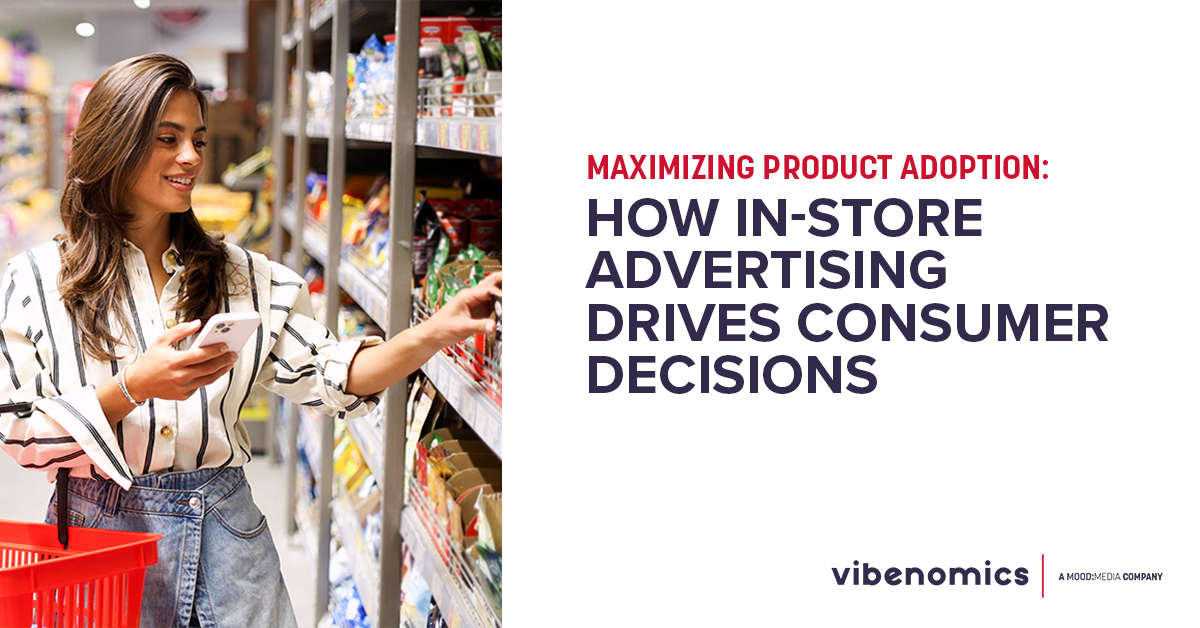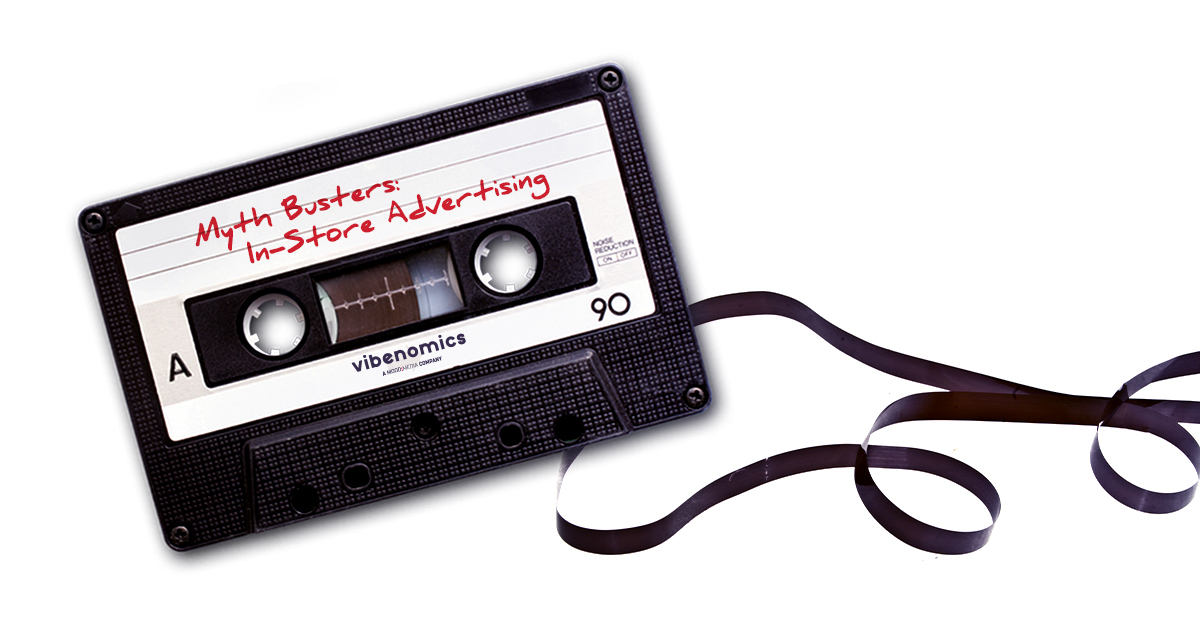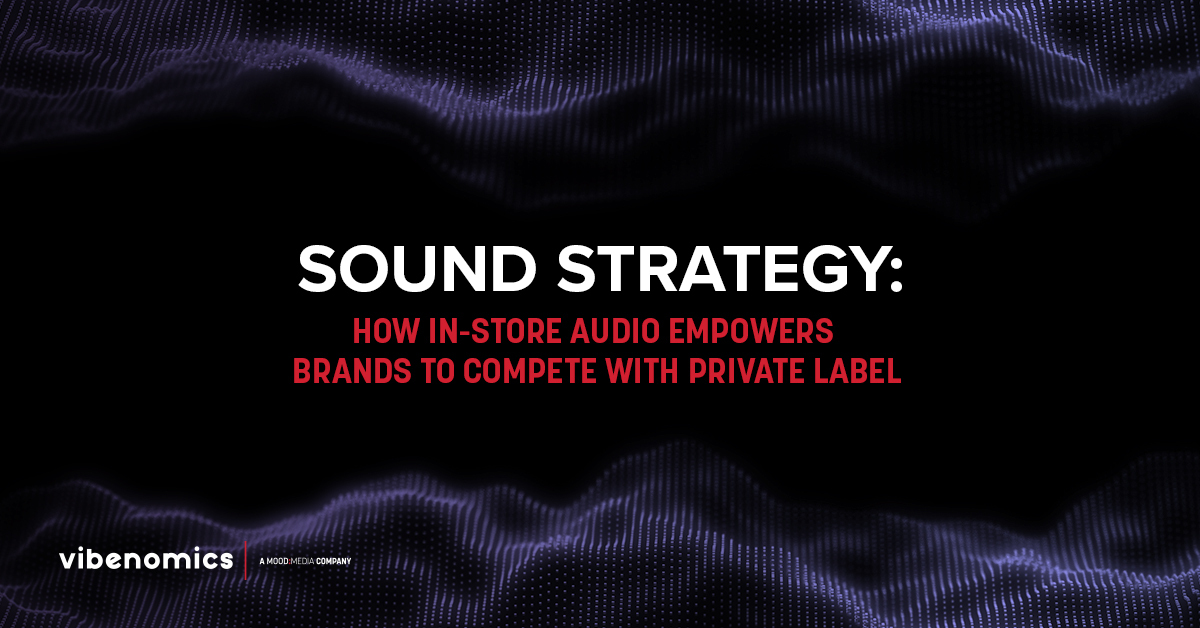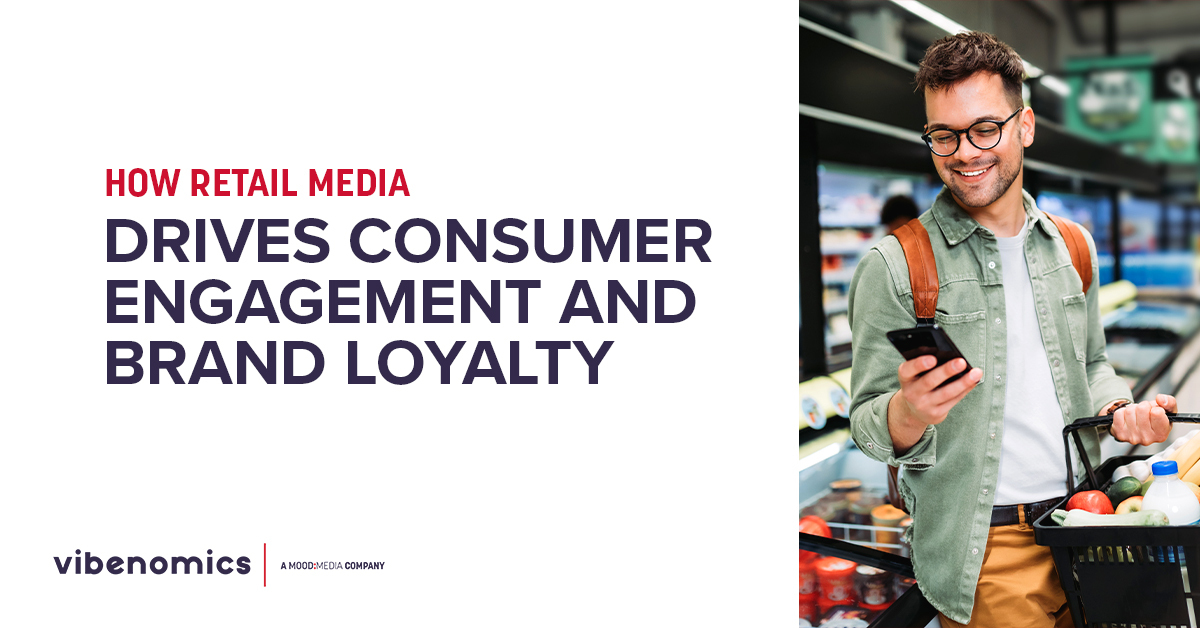If you’re running the same in-store advertising strategy for a 22-year-old and a 65-year-old, you’re not maximizing your potential revenue.
Vibenomics conducted a comprehensive survey in collaboration with Suzy Market Research to understand how different generations navigate in-store shopping experiences. We surveyed 973 consumers aged 18 to 79, all primary or shared household shoppers, across four generational cohorts.
The results were dramatic: Gen Z and millennials are both five times more likely to purchase products after hearing in-store audio ads compared to boomers.
This isn’t a minor preference gap. When half of your youngest customers respond to a medium that reaches only a fraction of your oldest, you have a measurement problem that’s costing you sales. The retail media market is projected to reach $176 billion, but most retailers are treating vastly different customer segments as if they shop the same way.
They don’t. And the data proves it.
Although 79% of consumers still choose physical stores over digital alternatives, each generation engages with those stores in a different way. They enter those stores with different expectations, respond to different stimuli, and make purchase decisions through completely different psychological frameworks.
Smart retailers are building their strategies around these differences instead of pretending they don’t exist.
The Audio Advertising Chasm
Half of Gen Z and Millennial shoppers who hear in-store audio ads purchase products as a direct result. Only 13% of boomers do the same. Gen X sits at 35%, closer to boomers than younger generations. Here’s why:
- Gen Z shoppers find in-store audio advertising “enjoyable” at a rate of 78%, compared to just 25% of boomers.
- Millennials fall at 51%, while Gen X lands at 46%.
- When it comes to engagement, 50% of Gen Z versus 30% of boomers rate audio ads as engaging, with millennials and Gen X again positioned between the extremes.
The reason for these differences is clear. Gen Z and millennials came of age during the rise of streaming and personalized audio content, while boomers and Gen X experienced audio advertising primarily through traditional radio and broadcast models. The in-store environment activates different expectations for each group.
Most retailers are allocating their share of that multi-billion-dollar retail media opportunity based on reach and frequency models that ignore response rates. They’re buying audio inventory the same way they’d buy radio spots in 1995.
But your store isn’t a radio station, and your customers aren’t a passive audience waiting to be interrupted. They’re active shoppers with different generational expectations about how brands should communicate with them at the point of purchase.
Digital Displays Tell the Same Story
Gen Z (56%) and millennials (50%) notice digital displays at roughly four times the rate of boomers (12%). Gen X falls in the middle at 20%.
Purchase influence follows the same pattern: 51% of Gen Z and 47% of millennials say digital displays affect their buying decisions, compared to 26% of Gen X and 18% of boomers.
However, 59% older shoppers do notice printed signage, well above their younger counterparts. This shows that boomers respond to different formats and are not necessarily just ignoring or missing ads altogether.
Here’s how this knowledge could be applied in practice: Your beauty brand promoting anti-aging products near the pharmacy? Print works better there. Same brand targeting acne treatments where teens shop? Digital screens win. The medium matches the audience, not your media buyer’s latest obsession.
Most retailers pick one approach and apply it everywhere. They’re either the “we’re going all digital” store or the “traditional signage still works” holdout. Both strategies waste money by ignoring who’s actually shopping for the advertised products.
The Strategic Implications
Most retailers are optimizing for the average customer, who doesn’t actually exist.
You can’t design an effective media strategy around statistical fiction. Your store doesn’t serve “the average 42-year-old shopper with 2.1 kids and a $67,000 household income.” It serves actual people, like the:
- 23-year-old picking up lunch who notices your audio ad.
- 35-year-old millennial who shops for tactile product experiences.
- 52-year-old Gen Xer browsing for deals.
- 68-year-old boomer comparing vitamin labels who studies your shelf display signage.
Smart retailers are mapping their stores by demographics, not just product categories. They’re running different digital display creatives in electronics vs. health and beauty, and timing their audio messaging to reach the right audience based on when they’re shopping in-store.
If Gen Z and millennials respond to audio at five times the rate of boomers, audio should get more budget in zones where younger shoppers spend time. Response rates drive budget decisions.
And the results are measurable.
In a recent 5-week campaign at a major northeastern grocery chain, a leading national poultry brand used Vibenomics in-store audio to engage parents at the point of purchase. Messaging focused on the convenience and quality of its microwavable chicken product line, highlighting flavor variety, time-saving prep, and antibiotic-free sourcing. The result: a 15% lift in sales and a iROAS of $14.84.
This kind of impact is only possible when creative is tuned to the right audience at the point of purchase.
The technology exists to track who’s responding to what, when, and where in your store. Most retailers just aren’t using it. Instead, they’re making million-dollar media decisions based on hunches and hoping for the best.
The retailers capturing a disproportionate share of the market are those building generational intelligence into their media strategies.
What Retailers Can Do Now
Start by auditing your current in-store media placement against your traffic patterns. If you’re running the same display creative in electronics and pharmacy, you’re missing easy wins. Electronics zones should feature shorter display spots about product launches and tech features. Pharmacy areas work better with longer, information-heavy messages about health benefits and trusted ingredients.
Time your audio ads and targeted digital displays to match generational shopping patterns. Schedule product demos and influencer content during after-work hours when younger shoppers visit. Run straightforward product information and pricing during mid-morning hours when older customers prefer to shop. The same screen, different audio and display content, better results.
These changes don’t require new technology or massive budget shifts. But they do require thinking about your store as multiple retail environments serving different customer segments, not one generic space trying to please everyone.
Work With Vibenomics
Vibenomics partners with retailers to implement generationally-savvy in-store advertising strategies, reaching over 170 million unique shoppers and 1 billion shopping visits monthly. We help brands map their stores by demographic patterns and schedule digital content based on when different generations shop.
Our platform provides the infrastructure to test and measure how different generational segments respond to various audio and visual formats across store zones. From audio campaigns tailored to Gen Z’s preference for engaging content to strategic display placement that captures boomer attention through traditional formats, we help retailers turn generational intelligence into measurable results.
Ready to put generational intelligence to work in your retail media strategy? Connect with Vibenomics to get started!
About Suzy Market Research
Suzy is a cutting-edge, real-time consumer insights platform trusted by over 400 brands across 22 industries. Suzy integrates quantitative and qualitative data with high-quality audiences into a single connected research cloud, providing businesses with the insights they need to make informed decisions quickly and efficiently.











